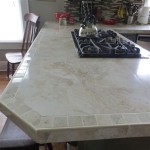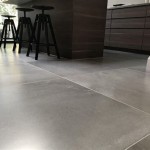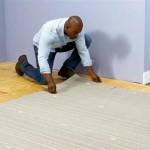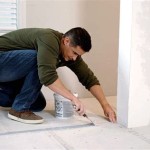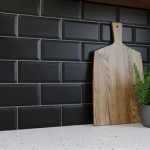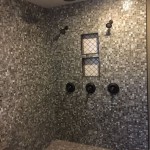Do You Have To Put Down Cement Board Under Tile?
When embarking on a tile installation project, a common question arises: do you need to install cement board underneath the tiles? The answer, while seemingly straightforward, involves a nuanced understanding of the substrate, the type of tile being used, and the overall project requirements. Cement board, a durable and moisture-resistant material, serves a critical role in enhancing the longevity and performance of tile installations, particularly in high-moisture areas.
When Is Cement Board Necessary?
Cement board is generally considered essential in the following scenarios:
- Moisture-Prone Areas: Bathrooms, kitchens, laundry rooms, and other areas susceptible to moisture require a waterproof barrier beneath the tile. Cement board, being highly water-resistant, effectively prevents moisture from penetrating the subfloor and causing damage.
- High-Traffic Areas: Areas with heavy foot traffic, such as entryways and hallways, benefit from the added strength and stability provided by cement board. Its robust structure can help prevent cracking and movement in the tile installation.
- Over Existing Subfloors: If the existing subfloor is uneven, damaged, or made of materials unsuitable for direct tile installation, cement board serves as a leveling and reinforcing layer. It creates a smooth and consistent surface for the tiles, ensuring an even and aesthetically pleasing result.
Benefits of Using Cement Board
Using cement board offers several advantages for tile installations:
- Moisture Resistance: As mentioned earlier, cement board provides a crucial barrier against moisture, protecting the subfloor and preventing issues like rot and mold.
- Increased Strength and Stability: Cement board significantly enhances the structural integrity of the tile installation, making it more resilient to impact and movement.
- Improved Durability: The robust nature of cement board helps prevent cracking and chipping of the tiles, extending their lifespan.
- Leveling and Smoothing: Cement board can be used to create a level and consistent surface, essential for achieving a professional and aesthetically pleasing tile installation.
Alternatives to Cement Board
While cement board is commonly used, there are alternative materials that can be employed depending on the specific project requirements. These include:
- Backer Board: Similar to cement board, backer board is also highly moisture-resistant and offers excellent structural support. It is generally thinner than cement board, making it suitable for situations where space is limited.
- Modified Thinset Mortar: In certain circumstances, a modified thinset mortar can be used as a direct bonding agent for tiles. However, it is essential to ensure the subfloor is properly prepared and meets specific requirements for this method.
- Waterproofing Membranes: These membranes are applied directly to the subfloor, creating a waterproof barrier. They are often used in conjunction with other substrate materials, such as plywood or concrete.
The choice of substrate material ultimately depends on factors such as the project scope, budget, and specific requirements of the installation. Consulting with a qualified contractor or tile specialist can help determine the most appropriate option for your particular project.

How To Install Cement Board On A Floor Diy Family Handyman

How To Install Cement Board The Home Depot

How To Install Cement Board The Home Depot

Easily Install Cement Board To Prep For Tile Installation

How To Install Hardiebacker Cement Board On Floors James Hardie Pros

How To Install Cement Board In 3 Easy Ways Q2 2024 Infographic

How To Install Cement Backer Board For Floor Tile Installation The Home Depot

Cement Backerboard Floor Tile Installation Uncookie Cutter

Installing Cement Backerboard For Tile Flooring Hometips

Cement Board Installation On Floors 5 Mistakes To Avoid Diytileguy
Related Posts

